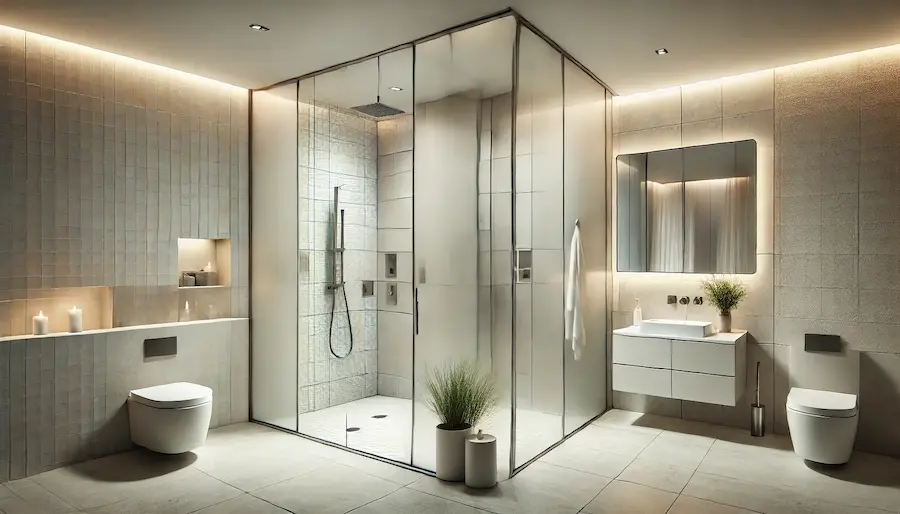Partitioned bathrooms utilize various design elements to create distinct zones within the space, enhancing both functionality and aesthetics. By incorporating partitions, homeowners can achieve privacy, organization, and a tailored ambiance that suits their preferences.
History and Origins of Partitioned Bathrooms
The concept of partitioned bathrooms has evolved over time, influenced by cultural practices and architectural trends. In traditional Japanese homes, for instance, bathrooms are often divided into separate areas for bathing and toileting, reflecting a cultural emphasis on cleanliness and ritual. This approach has inspired modern designs that prioritize functionality and privacy through thoughtful spatial separation.
Key Features of Partitioned Bathrooms
- Functional Zoning: Partitions create distinct areas for different activities, such as showering, bathing, and toileting, enhancing usability.
- Privacy Enhancement: Dividers offer privacy within shared bathroom spaces, making them suitable for multiple users simultaneously.
- Aesthetic Appeal: Well-designed partitions contribute to the overall visual appeal, adding texture, color, or architectural interest.
- Space Optimization: Partitions can help in organizing small bathrooms efficiently, ensuring each function has its designated area.
Applications of Partitioned Bathrooms
- Residential Homes: Homeowners use partitions to create en-suite bathrooms that offer privacy and luxury.
- Hotels and Resorts: Partitions are employed to provide guests with functional and aesthetically pleasing bathroom spaces.
- Public Restrooms: Partitions are essential in public facilities to ensure individual privacy and hygiene.
Considerations When Choosing Partitions for Your Bathroom
- Material Selection: Choose materials that are moisture-resistant and durable, such as tempered glass, treated wood, or waterproof panels.
- Design Harmony: Ensure the partition complements the overall bathroom design and color scheme.
- Space Constraints: Consider the bathroom’s size; in smaller spaces, opt for partitions that don’t overwhelm the room.
- Maintenance: Select materials and designs that are easy to clean and maintain, especially in high-moisture environments.
Conclusion
Incorporating partitions in bathroom design offers a blend of functionality and style, allowing for personalized spaces that cater to individual needs. By thoughtfully selecting materials and designs, homeowners can create partitioned bathrooms that are both practical and aesthetically pleasing.
